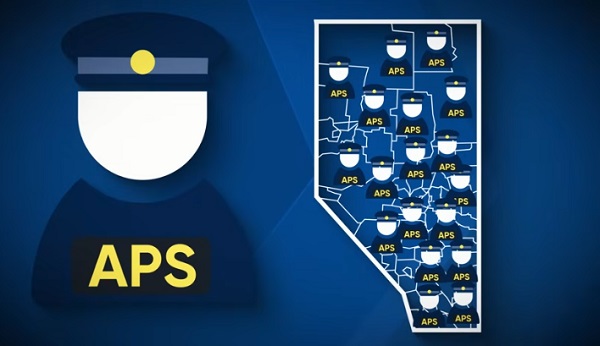FEDERAL REFORMS TO IMPROVE HOUSING AFFORDABILITY
BY JOSEF FILIPOWICZ AND STEVE LAFLEUR
Canada’s declining housing affordability reflects a large, worsening imbalance between housing demand and housing supply.
Few policy areas are gaining as much attention in Canada as housing. This is unsurprising, given that Canada has the largest gap between homes prices and incomes among G7 nations (OECD, 2023) and rents continue to rise in most cities (Statistics Canada, 2023a). As eroding housing affordability has expanded to more parts of Canada, demands for policy solutions have grown beyond local jurisdictions, pressuring federal decisionmakers to act.
First, this essay offers a diagnosis of the issue—a large, growing imbalance between housing demand and supply. Second, it discusses federal policies affecting housing demand, urging better coordination and restraint amid tight supply conditions. Third, it discusses the federal government’s less-direct—though still important—options to improve housing supply.
Guiding principles: do no more harm, and close the demand-supply gap
Canada’s declining housing affordability reflects a large, worsening imbalance between housing demand and housing supply. This is evident when comparing trends in population growth and housing completions. Figure 1 charts these two metrics between 1972 and 2022. In recent years, Canada’s population growth has accelerated, while the number of homes completed has declined relative to the 1970s. 1

Policy efforts should focus on closing the demand-supply gap. The federal government should first ensure that it is not exacerbating the problem, either by stoking demand or by stifling supply, and second by both reviewing all existing policies through a supply-demand lens while implementing tailored policies aimed at closing the demand-supply gap.
Demand-side considerations for federal housing policy
Though all levels of government influence both housing demand and supply, the federal government’s policy levers pertain more directly to demand. They do so in two important ways.
First, federal policy influences population growth. As Canada’s birth rate has declined, population growth has been driven primarily by immigration (including both permanent and temporary residents) (Statistics Canada, 2023c). Though provinces may influence immigration decisions, the federal government establishes annual targets (where applicable) and admission criteria (Filipowicz and Lafleur, 2023).
Second, the federal government influences households’ ability to pay for housing. Policies for home buyers including the First-Time Home Buyers’ Tax Credit and the First Home Savings Account, which, combined with the Home Buyers’ Plan, enable the accumulation of tax-free savings for a down payment. 2 Federal policies for homeowners include the exemption from capital gains taxation on the sale of primary residences, loan insurance through the Canada Mortgage and Housing Corporation, and residential mortgage underwriting through the Office of the Superintendent of Financial Institutions. Combined, these policies influence the relative attractiveness of housing as an investment.
Without adequate supply, these policies result in higher prices, rather than greater affordability. The federal government should review all existing or proposed policies directly or indirectly impacting housing demand. Further, it should adopt the following two policy approaches:
• Stronger consideration of housing supply dynamics when determining short, medium and long-term immigration targets or visa issuance. For example, supply metrics (e.g. housing starts, completions, and rental vacancy rates) should help inform multi-year plans or criteria for permanent and non-permanent resident admissions.
• Refraining from introducing new demand-inducing subsidies, such as tax credits or subsidies to homebuyers and homeowners, while comprehensively reviewing the impact of existing subsidies.
Supply-side considerations for federal housing policy
Housing supply in Canada is influenced primarily by provincial and local governments. Decisions concerning land-use and growth planning—including for lands owned by the federal government—largely rest with these levels of government, meaning housing construction projects cannot be realized without first aligning with, and receiving approval from, local authorities. Federal policies aiming to grow the housing supply must account for this.
Federal influence on housing supply can be divided into four policy types. First are fiscal transfers. Every year the federal government transfers billions of dollars to municipalities to fund infrastructure. In some cases, funding is permanent and based on federal-provincial agreements.3 In other cases, funding is negotiated for specific projects.4
Second, the federal government also funds the development of non-market housing. Programs such as the National Co-Investment Fund and Rapid Housing Initiative offer low-interest or forgivable loans, and direct funding, respectively, to organizations building or acquiring non-market housing.
Third, federal tax policies and programs influence the financial feasibility of homebuilding. For example, federal sales and capital gains taxes apply differently to different housing types, such as condominiums, rental buildings and accessory dwelling units (e.g. basement or laneway suites).5
Further, federal programs such as the Rental Construction Financing Initiative and multi-unit mortgage loan insurance products influence project feasibility by providing rental builders with low-interest loans or reduced premiums.
Fourth, the federal government’s primary responsibility for immigration gives it significant influence over the mix of skills prioritized in application screening, affecting the construction sector’s ability to recruit workers. Indeed, the share of immigrants working in the construction sector was lower than that among Canada’s overall population in 2020 (BuildForce Canada, 2020), reflecting the longstanding selection preferences of federal immigration policy until more recent changes.6
The federal government should coordinate with local and provincial governments as it develops policies, avoiding the creation of additional barriers and duplication. Specifically, the following three approaches should inform federal efforts to improve housing supply:
• Tying all federal infrastructure funding to housing supply metrics such as housing stock growth, starts or completions, ensuring limited funds are directed to those regions facing the strongest growth pressures in a transparent fashion, while reducing administrative costs and jurisdictional overlap.
• Reviewing and reforming the tax treatment of all housing development, helping improve the feasibility of large- and small-scale projects Canada-wide.
• Further prioritizing skills related to homebuilding in immigration policies and eligibility criteria.
Conclusion
Faced with a widening gap between housing demand and supply, this essay focuses on the federal government’s influence on housing markets, offering five areas of policy action.
The most direct federal levers pertain to housing demand. Housing constraints should be weighed more heavily when setting immigration policy, including temporary immigration, and new demand-inducing policies such as homebuyer tax credits should be avoided, while existing policies should be reviewed.
Given the federal government’s less direct influence on housing supply, intergovernmental coordination is recommended. Limited transfer funding should follow local housing supply metrics, while the tax treatment of housing development could also be reformed, enabling a larger number of projects to be financially feasible. Lastly, immigration policies should emphasize skills required to build more housing.
Authors:
Senior Fellow, Fraser Institute
Notes
1 For more on the gap between population growth and housing completions, see Filipowicz (2023).
2 For a full list of incentives and rebates for homebuyers, see <https://www.cmhc-schl.gc.ca/consumers/home-buying/government-of-canada-programs-to-support-homebuyers>, as of February 5, 2023.
3 For example, the Canada Community-Building Fund (formerly the Gas Tax Fund) delivers approximately $2 billion annually to local governments.
It is governed by a series of federal-provincial agreements.
4 For example, the federal government has committed one-third of the capital funding required by the Surrey Langley SkyTrain. Similar agreements
are common for major transit infrastructure.
5 The federal government recently announced the removal of the goods and services tax on purpose-built rental housing, helping the feasibility
of this housing class. For more on the influence of federal taxation on rental housing, see Canadian Home Builders’ Association (2016).
6 Immigration, Refugees and Citizenship Canada changed screening processes in mid-2023, favouring trade occupations, among others. The full effects of these changes will become apparent with time.
Sources for Figure 1
Statistics Canada, 2023a, table: 17-10-0009-01; Statistics Canada, 2023b, table: 34-10-0126-01.
References
BuildForce Canada (2020). Immigration Trends in the Canadian Construction Sector. <https://www.buildforce.ca/system/files/documents/Immigration_trends_Canadian_construction_sector.pdf> as of September 13, 2023.
Canadian Home Builders’ Association (2016). Encouraging Construction and Retention of Purpose-Built Rental Housing in Canada: Analysis of Federal Tax Policy Options. <https://www.evergreen.ca/downloads/pdfs/HousingActionLab/HAL_EncouragingConstructionAndRetention_FINAL.pdf> as of September 13, 2023.
Filipowicz (2023). Canada’s Growing Housing Gap: Comparing Population Growth and Housing Completions in Canada, 1972–2022.
Fraser Institute. <https://www.fraserinstitute.org/sites/default/files/canadas-growing-housing-gap-1972-2022.pdf>, as of February
5, 2024.
Filipowicz, Josef and Steve Lafleur (2023a). Getting Our Houses in Order: How a Lack of Intergovernmental Policy Coordination
Undermines Housing Affordability in Canada. Macdonald-Laurier Institute. <https://macdonaldlaurier.ca/getting-our-houses-in-order-how-a-lack-of-intergovernmental-policy-coordination-undermines-housing-affordability-in-canada/>, as of February 5, 2024.
Immigration, Refugees and Citizenship Canada (2023). Express Entry Rounds of Invitations: Category-based Selection. <https://www.
canada.ca/en/immigration-refugees-citizenship/services/immigrate-canada/express-entry/submit-profile/rounds-invitations/category-based-selection.html>, as of September 15, 2023.
International Monetary Fund (2023). Report for the 2023 Article IV Consultation. [or Country Report: Canada]. <https://www.imf.
org/en/Publications/CR/Issues/2023/07/27/Canada-2023-Article-IV-Consultation-Press-Release-and-Staff-Report-537072> as of
September 13, 2023.
Organisation for Economic Cooperation and Development [OECD]. 2023. Housing Prices (indicator). DOI: 10.1787/63008438.
OECD. <https://data.oecd.org/price/housing-prices.htm>, as of February 5, 2023.
Statistics Canada (2023a). Table 34-10-0133-01. Canada Mortgage and Housing Corporation, average rents for areas with a population of 10,000 and over. <https://www150.statcan.gc.ca/t1/tbl1/en/cv.action?pid=3410013301>, as of February 5, 2023.
Statistics Canada (2023b). Table 34-10-0127-01. Canada Mortgage and Housing Corporation, vacancy rates, apartment structures of six units and over, privately initiated in census metropolitan areas. <https://www150.statcan.gc.ca/t1/tbl1/en/tv.action?pid=3410012701>, as of February 5, 2024.
Statistics Canada (2023c). Table 17-10-0008-01. Estimates of the components of demographic growth, annual. <https://www150.
statcan.gc.ca/t1/tbl1/en/tv.action?pid=1710000801>, as of March 2, 2023.
Related























